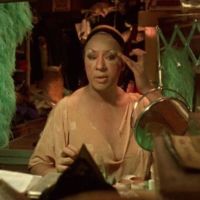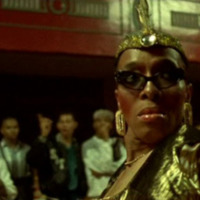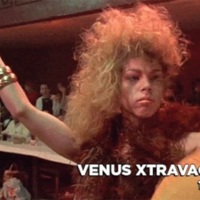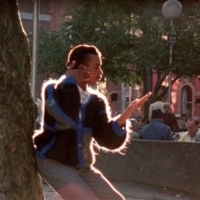Methods and Design
MATERIAL
The material I will analyze is the language produced by the interviewees, either during formal interviews or spontaneous utterances in generalized contexts. I will be taking a multi-faceted approach, but emphasis will be put on more discursive analyses as well as the speech community-specific lexicon employed by the apparent members. Seven subjects constitute the bulk of language produced within the documentary: Pepper LaBeija, Freddie Pendavis, Dorian Corey, Venus Xtravaganza, Angie Xtravaganza, Willi Ninja, and Octavia St. Laurent. A transcript of the documentary was analyzed and individual words were counted determine the weight of each individual’s productions. The number of words uttered by each respective person is as follows:
- Dorian Corey - 1607
- Pepper LaBeija - 1168
- Venus Xtravaganza - 969
- Willi Ninja - 937
- Freddie Pendavis - 716
- Octavia St. Laurent – 511
PEFORMER DESCRIPTIONS
Productions from the relevant performers featured within the documentary will be analyzed for particular features that index one or multiple of their identities. It is first necessary to understand how each individual identifies in order to effectively comprehend how they fit into the general analyses of language in terms of ethnicity, sexual orientation, and gender identity.
- Dorian Corey is one of the two expositional subjects in the documentary, and provides much of the history and context of ballroom culture. She is a white drag queen and represents the “older” style of drag
- Pepper LaBeija is a black drag queen and the other expositional subject, and is the Mother of the House of LaBeija
- Venus Xtravaganza is a white drag queen who represents a “newer” generation of ballroom drag queens. At the time of the film she had been recently adopted into the House of Xtravaganza.
- Willi Ninja is a gay black man who is highlighted in the documentary as an expert on the dance form ‘Voguing’. He does not appear in the documentary as a drag performer
- Freddie Pendavis is also a gay black man and protégé of the drag queen Sol Pendavis (who does not feature heavily within the film). He does not appear in the documentary as a drag performer.
- Octavia St. Laurent is a black drag queen and also represents the newer generation of queens within the ballroom circuit
DESIGN
In order to understand how these individuals express their identities through their language, I will apply multiple approaches that encompass various linguistic features and analyze how they function within the context of this documentary. Specifically, I will analyze their phonology and how certain features index or block certain identities, as well as pragmatic devices that the individuals use to navigate their identities in a social context. In terms of phonology, I will base my argument off Rusty Barrett’s concept of indexing polyphonus identity through particular speech features. Then, using Dr. Kathryn Campbell-Kibler’s discussion of gay-male speech, I will attempt to understand how certain phonological features index or block certain identities. Subsequently, I will use Patrick Johnson’s definition of the pragmatic device of “reading”, then apply Carmen Fought’s approach to ritualistic insults to better understand how this practice is used under the context of the performers’ various identities.






